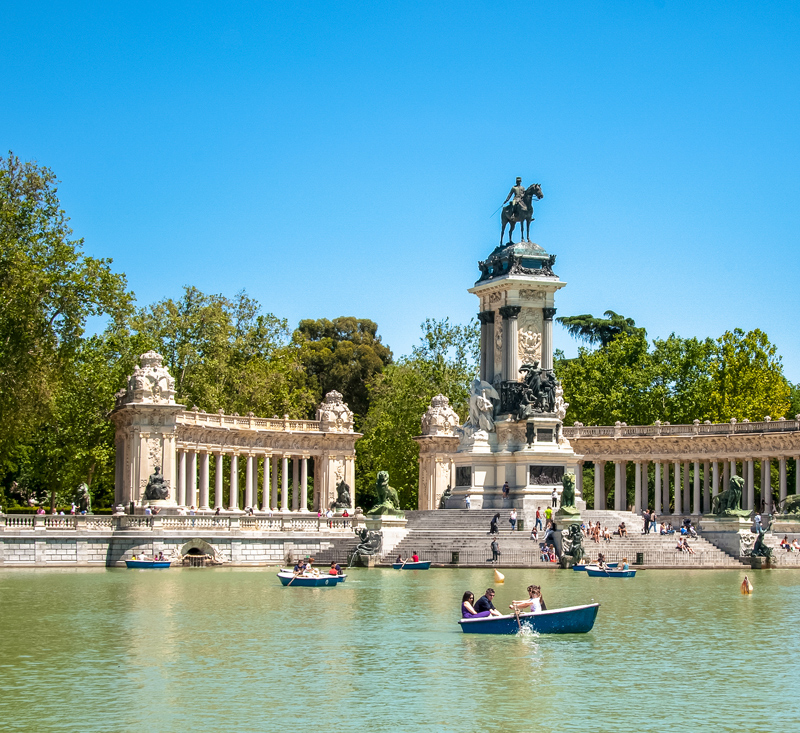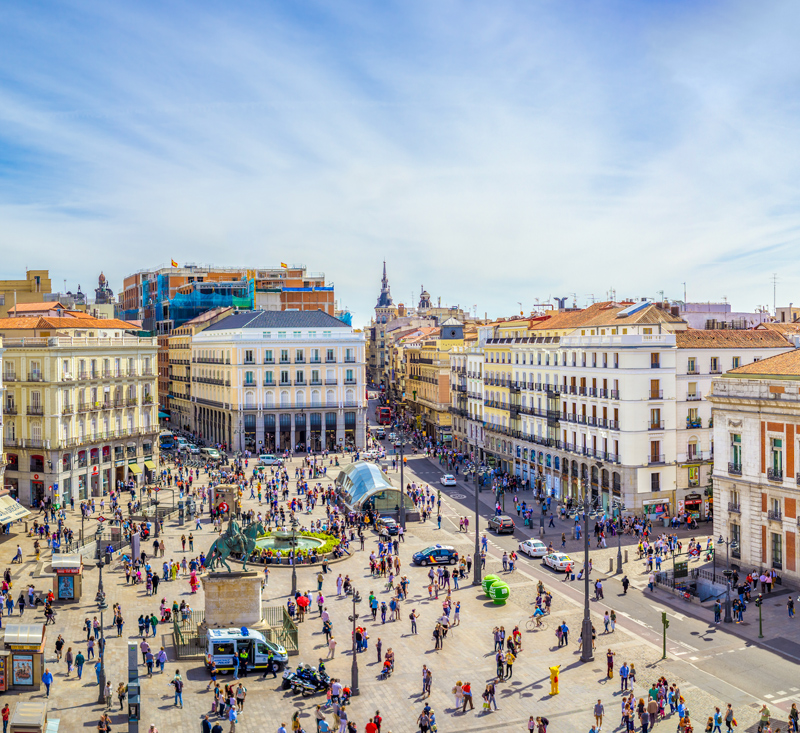Though the Spanish economy was hit hard by the Covid-19 pandemic, Madrid has managed to rebound in 2021, reaching a 5% GDP growth rate. In fact, the capital is forecast to grow faster than both the Spanish and the European average in the coming years. This dynamism rests on multiple factors. Madrid’s strategic location and open economy offer privileged access to the European Single Market and to emerging economies in North Africa and Latin America. The city’s airport, the second-largest in Europe by capacity, acts as the main point of arrival for international visitors in Spain.
Meanwhile, the city’s business ecosystem has managed to become one of the most influential high-tech hubs on the Old Continent, attracting foreign investment in strategic sectors, among which e-health and fintech. This innovative approach is backed by a highly-skilled population over two million-strong as well as first-class universities that produce essential talents for both foreign and local companies. A combination of competitive fiscal and legal frameworks completes this all-rounder profile. Lastly, Madrid can also rely on a strong Tourism sector, standing out as Europe’s top MICE destination. The city’s buzzing atmosphere and the quality of life it offers guarantees that everyone can feel welcome, whether for business or leisure.
Sustainability
Like other capital cities in Europe, Madrid has realized it must act to mitigate climate change by developing sustainable solutions. The city launched Madrid 360, a comprehensive strategy to promote cleaner mobility that will lower Madrid’s emissions by 60% from 2022 to 2030. For this, Madrid has secured more than $110 million in credits aimed at subsidizing the city’s mobility overhaul over the 2021-2023 period. The plan will also boost Madrid’s air quality, which showed signs of improvement in 2021 compared to pre-pandemic levels. Major urbanization plans in Madrid also follow this thinking, with Madrid Nuevo Norte developed with the goal of obtaining both the BREEAM and LEED green building certifications.
Madrid’s strategy is part of a larger movement. Indeed, Spain hopes to reduce its greenhouse gas emissions by 23% through 2030 while improving its energy efficiency by 39.5%. As in other sectors in Spain, Madrid is pioneering those efforts.
Innovation
Innovation is at the center of the capital’s growth strategy. As the country’s financial powerhouse, the city hosts more than 200 fintech companies, making it the world’s fourth-largest fintech city, only behind San Francisco, New York and London. The authorities’ active involvement in developing strategic sectors, such as e-health, cybersecurity or big data, has translated into massive investment in start-ups and entrepreneurship, to the amount of $2.9 billion in 2022 alone. The city now hosts three business incubators for start-ups, all backed by a strong education system and well-ranked universities, which have been crucial in developing talent. Meanwhile, the Spanish government approved the country’s first Startup Law in 2021, simplifying procedures to create these companies while creating incentives to attract entrepreneurs. Madrid also took steps to accompany the digitalization of the economy by launching Madrid Futuro in mid-2020, a regulatory sandbox that will help create and market high value-added projects.

Logistics
Internationalization (US investment in Madrid)
Madrid is a central node in Spain for international exchanges. In 2021, the Madrid region received around 73% of FDI coming into Spain, at around $21.4 billion. That year, the US was the 5th biggest emitter of FDI to the Madrid region, with close to $1.3 billion. Meanwhile, the region placed second in terms of Spanish export of goods in 2021, with pharmaceutical products, automobiles and machinery as the top-three export categories in volume. With those elements in mind, the city of Madrid has seen the opportunity to upgrade those sectors to include even more high-tech elements. This has notably been the focus of Isabel Diaz Ayuso’s trips to the US in 2021 and 2022, with the President of the Madrid region pushing for closer economic ties between her region and the US. In this endeavor, Madrid’s growth trends surely benefit Ayuso’s efforts.


Quality of Life
The quality of life in Madrid is one of the highest among European capitals. In addition to being a safe environment for inhabitants and visitors alike, the city’s first-class public healthcare system guarantees a life expectancy above the European average. Madrid’s cultural offer stands out in the art world, counting 30 museums where both globally-famous and more niche artworks can be seen. Madrid’s cultural heritage can also be experienced outdoors, as UNESCO granted world heritage status to the Paseo del Prado and the Retiro Park in 2021. The city is also a great place for entertainment and sports, with multiple clubs in the most competitive European leagues, from soccer to basketball. Lastly, it is impossible not to mention the world-famous Spanish gastronomy. Whether you are interested in one of the city’s 21 Michelin-starred restaurants or looking for simpler cuisine, the capital will be a delight for your senses.
Tourism
Tourism ranks high among Madrid’s sectoral priorities, receiving $27.6 million in 2022 to promote the city abroad, almost double the previous year’s budget. A new strategy focused on high-value tourism was also put in place, highlighting the cultural elements the city offers to international travellers, with a focus on the U.S. and Mexico. This is in line with the city’s successful efforts to become a reference point not only for leisure, but also business tourism. Indeed, the city has confirmed its position as Europe’s top MICE destination, hosting a plethora of international events, such as FITUR or the June 2022 NATO Summit. Madrid can fully implement that strategy thanks to various elements: the city recently saw a wave of new luxury hotel openings in 2021. Meanwhile, the Adolfo Suárez Madrid-Barajas airport has direct connections to around 145 cities around the planet.




